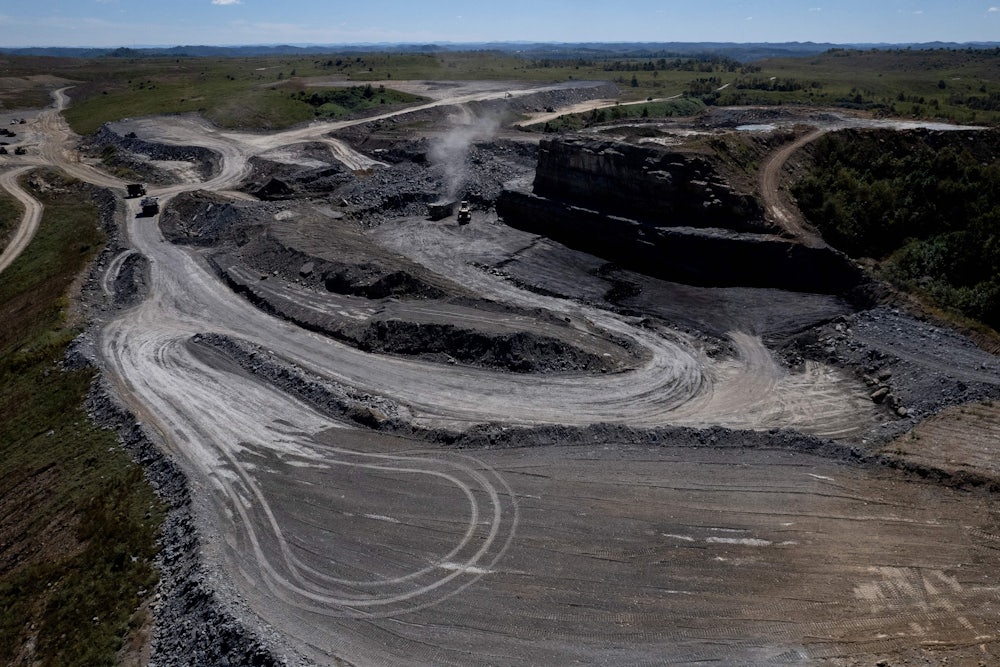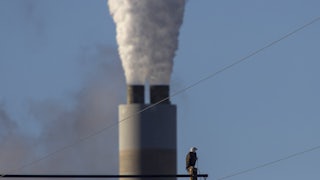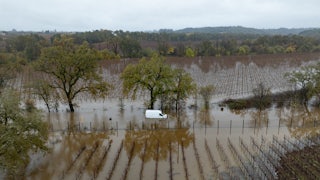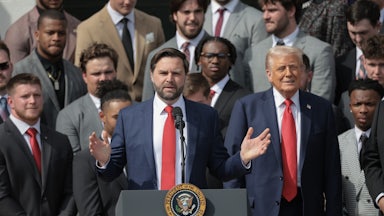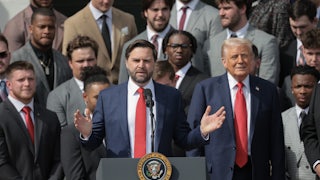Staring down the barrel of a tough reelection fight, the White House still has not selected a nominee to lead the Department of Interior office charged with cleaning up this country’s festering stock of toxic old coal mines. The decidedly unsexy sounding Office of Surface Mining Reclamation and Enforcement, or OSMRE, has not had a director since the Trump administration. Its job is only getting bigger. For example: In 2021, auditors working for the Republican-controlled West Virginia state legislature found that the state had just 10 percent of the cash needed to cover cleanup costs, which the nonprofit Appalachian Voices estimates to be around $3.6 billion; West Virginia taxpayers could be made to cough up at least some significant part of the difference. The same year, the group estimated the total cost of outstanding reclamation across Alabama, Tennessee, Virginia, Kentucky, West Virginia, Ohio, and Pennsylvania at between $7.5 and $9.8 billion.
With coal companies facing a bleak future, OSMRE ought to be figuring out how to bring itself into the twenty-first century and protect the people and places dealing with the fallout of painful, messy, ongoing energy transition. Instead, an agency run by career staff encumbered by years of attrition has been left rudderless as coal bosses devise ways to leave the public holding the bag for the mess they created. Ironically, West Virginia’s own son may be a big part of the problem: Any OSMRE director would need to get the blessing of the Senate Energy and Natural Resources Committee chair, West Virginia senator and coal executive Joe Manchin.
Grasping just how serious the situation at OSMRE is requires understanding a bit about its roots. The office is the product of 1977’s Surface Mining Control and Reclamation Act, or SMCRA, which established rules for how to deal with an accumulating mass of mines that corporations couldn’t be bothered to deal with once they’d gotten the coal out of them.
Passed around the time of a suite of measures designed to stimulate domestic fossil fuel production in the wake of the 1970s oil panics, SMCRA was meant to encourage the “expansion of coal mining,” thereby contributing “to the economic well-being, security, and general welfare of the Nation.” The statute isn’t especially well equipped to handle the realities of today’s coal industry.
SMCRA was meant to prevent reckless mining practices, ensure that mining took place in an environmentally friendly manner, and—critically—offer a financial backstop in the event that some companies folded. States were encouraged to develop their own plans for raising funds from mine operators to cover cleanup costs through bonding requirements—essentially, a minimum fee that mine operators pay like an insurance policy: If they clean up after themselves, they get it back. If not, those funds are used to do that work anyway. The act states, as well, that companies should perform reclamation work on an ongoing basis rather than leave it all for the end. To states stuck to federal standards, those plans (and subsequent revisions) would need to get approval from the office.
The Reagan administration, especially, was eager to approve more lax plans from industry-friendly departments. Shortfalls predate coal’s recent crash: As ProPublica and Mountain State Spotlight reported last December, state and federal officials “have been warned repeatedly over the past 40 years that this reckoning was coming but have failed to prepare for it.” An urgent problem could soon become a catastrophic one: Nearly 70 coal companies filed for bankruptcy between 2012 and 2020, thanks largely to declining demand via the rising use and extraction of methane gas.
“That system kind of limped along for the last 46 years. As we’re realizing now, it’s completely unsuited for the present situation: The entire coal mining industry is in significant decline,” says Peter Morgan, a senior attorney at the Sierra Club’s Environmental Law Program. “That’s a particularly bad time for a federal regulator to be without a director.” Though the bipartisan infrastructure law injected much-needed funds ($11.3 billion) into the Abandoned Mine Lands Program, staffers already stretched thin are now also also navigating the contentious process of distributing and tracking those funds.
Incentive mechanisms were meant to dissuade companies from dining on lush coal seams and dashing when the bill—for retirees, or environmental remediation—came due. Treating that kind of capital flight as an occasional event doesn’t work when the entire industry is in decline. The Applicant/Violator System was set up to keep track of which corporate entities fell behind on their bonding obligations. Since corporate entities can shirk responsibilities through bankruptcy courts and other such means, the system was meant to compile information on both companies and individuals. If someone had been high up at a firm that routinely violated the terms of a permit or other tenets of the SMCRA, in other words, any company they worked for could be barred from getting new coal permits down the line. The trouble now is that not many people are looking to get into the coal business.
There’s been some progress. Interior announced the appointment of Deputy Principal Director Sharon Buccino earlier this month. Proposed rules, first released by OSMRE last spring, would restore authorities the previous administration stripped away. A long-held strength of OSMRE enforcement had been citizens’ ability to bypass looser state-level rules and demand federal regulators step in if they’d proven too lax. The Trump White House tried, instead, to make it easier for state regulators to ignore complaints and tie up would-be enforcers in endless bureaucratic processes. Morgan says he expects a final rule to be announced sometime within the next six weeks.
“The most important thing OSMRE could do right now is to just pull the curtain back and shine a light on what is happening on the ground and how bad things are,” Morgan says. “OSMRE has access to all of this data for all of the states. Whether intentionally or because they’re under-resourced, state records on all of these individual permits are not reflecting the realities on the ground.” Setting that record straight would entail going state by state to see whether mines really are active or not, ideally prompting more inspections and enforcement action. Claiming that a mine is active is a way for companies to punt on cleanup obligations, even if there’s no reasonable expectation those sites will produce more coal. “There are all of these zombie mines listed on state permit databases as being active. If you dig down,” Morgan says, “they haven’t produced coal in years. They haven’t done any reclamation in years. They probably don’t have any employees any more—or have one employee with a pickup truck who sits on a mine site.”
The White House did not respond to a request for comment on this story or its plans for the office, and doesn’t appear to have been too responsive to other reporters who’ve pointed out the director vacancy over the last several months and years, either. Top of mind in their calculation, undoubtedly, is the fact that Manchin holds the deciding vote on whether a nominee gets through.
Manchin founded two coal companies in the 1980s, now Enersystems and Farmington Resources Inc. Between joining the Senate in 2010 and 2022, he grossed more than $4.5 million from both, per an analysis published that year by The Intercept and Type Investigations. As of that time, neither of the companies Manchin continued to make money from owned mines in the state—Enersystems resells “waste coal” from mines to power plants as fuel; Farmington Resources Inc. provides “support activities for mining.” That said, the CEO of the company Enersystems had long purchased waste coal from, LP Minerals LLC, was indicted by the Federal Elections Commission in 2017 for funneling company funds toward Manchin and other West Virginia politicians.
Manchin has fiercely opposed efforts to hold the fossil fuel industry accountable on just about any front. His own fortunes, relatedly, are bound up in an industry that isn’t exactly eager to foot the bill for additional cleanup costs. Any nominee pledging to demand more of mine operators—per expert recommendations—probably couldn’t count on Manchin to cast a deciding vote in their favor. (Manchin’s office did not reply to a request for comment.)
Though few who track these issues closely would say as much, the problems posed by abandoned coal mines are in some ways enviable. There is no parallel institution or statute for cleaning up oil and gas wells. Adequate monitoring and cleanup efforts are few and far between, and the government has struggled to get a handle on the sheer scale of the problem posed by millions of wells in various states of decay, neglect, and ownership status. The Bureau of Land Management has historically set bonding requirements for companies that drill on federal lands. Those remain shockingly low compared to actual costs, at least barring the implementation of updates Interior proposed last year. Cleanup efforts elsewhere are a patchwork of local and state rules often governed by industry-friendly bodies like the Texas Railroad Commission.
It’s hard to imagine the United States approaching any real transition off oil and gas so long as the path away from coal continues to be such a mess. “SMCRA is not working,” Morgan says. “State regulators are not protecting people who live near these mines. There needs to be a total rethinking of the approach to regulating coal mining in light of the state of the industry. That sort of change within an agency isn’t going to come from career staff. That sort of change can only come from a director who has the blessing and weight of the administration behind them.”
